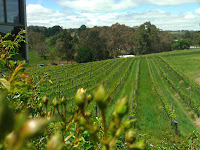Last week was a difficult one and I was really glad to get to Thursday, where at the close of play I decided ‘that was it’ for the 2011 academic session. It wasn’t and I spent many hours on the 23rd sorting out problems and it was late on in the evening that my Christmas break started. Yesterday was Christmas Eve, and it was a day that started dull and cloudy. I went up to High Rid with Cello, and unlike last year there was no snow, and spookily, no people.
Later on, Christmas Eve was to be transformed into Christmas Day as some of my children came to celebrate their Christmas. By 14.00 there were ten of us sitting around eating a wonderful Mushroom, and Cashew Nut and /or Turkey Roast meal – and yes the sprouts were cooked to perfection, the roasted vegetables were heads held high in a rosemary herb sauce and the mash was horseradish infused. There were no prisoners and no leftovers for the chickens to enjoy.
Today is to be a repeat performance, but with a completely different set of members of the extended family– this time with eight people sitting around the table. However, a relaxed day is envisioned as we are not planning to eat until 16.00 hours. There is a chance for Cello and I to go for a walk, and put the world to rights as we do.
And today is the first day of Christmas. I am always reminded of the song the Twelve days of Christmas on Christmas Day. January 6th is the Twelfth Day, and the Twelfth Night is defined by the Oxford English Dictionary as ‘the evening of the fifth of January, preceding Twelfth Day, the eve of the Epiphany, formerly the last day of the Christmas festivities and observed as a time of merrymaking’
Of course (well maybe) it is the Third day of Christmas that interests me the most. This is the day that ‘my true love’ gives three French Hens which, in a biblical sense refers to Faith, Hope and Charity. Given the high degree of uncertainty there is for many people in the world at the moment, these are virtues that we are going to have to draw upon again and again over the next 12 months.
Yesterday, thanks to Mr I Pad (and don’t say anything to my little Brother Mark because he will become impossible in a I told you sort of way) I was able to speak to family and friends from around the world. Amazingly clear images and conversations all of which were achieved at a press of the button. I will speak to my little sister in Australia later on this morning but she did send me a photo of her outside Christmas tree decoration.
This is my first blog at Christmas that is actually written on Christmas Day - so it only remains to say a Merry Christmas to all my many French Hens, Family and Friends, and whereever you are and whatever you are doing, I hope it’s really good for you.




















































